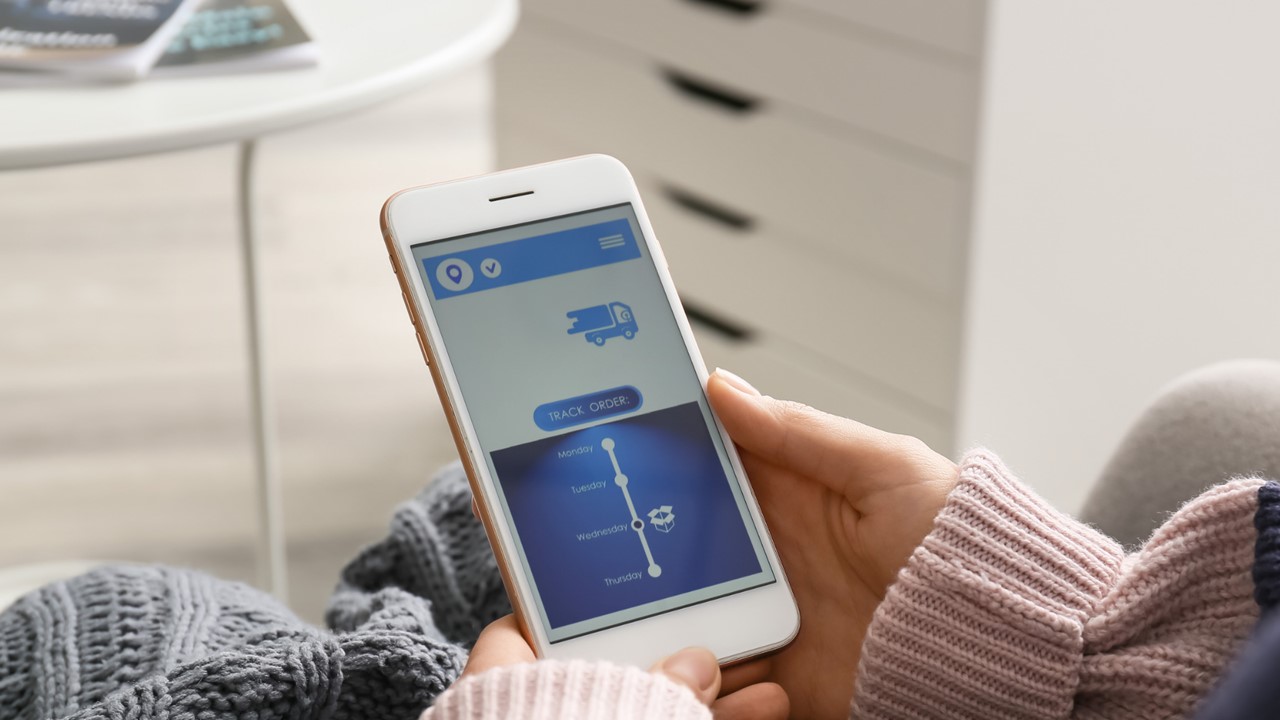A Story of Success: Mobile App Development for a Major Client in Logistics
Table of contents
Are established processes and a willingness to experiment and face challenges compatible? Can you cram a comprehensive web client into an elegant, functional mobile solution? Is long-term cooperation possible in the rapidly changing world of mobile technologies? We found out that it was, eight years ago, when international shipping and container transportation company Hapag-Lloyd inquired about a solution to allow their customers quick and remote access to their shipment tracking information. We built just that.

The Need for a Mobile App
At the time Hapag-Lloyd reached out to us about solving this problem, only a web application existed for their shipment tracking. It was extensive but overly complicated to use on a mobile phone or device. The client wanted more than just a mobile-friendly web application. They wanted to elaborate the core business features into a completely new, handy, and lightweight, but powerful, solution to their user’s needs for shipment management.
For this project, we covered the full cycle of software development and maintenance including UX/UI design, requirements analysis, development, testing, deployment, and ongoing maintenance.
The Development Process
The client had ambitious plans for the application. They were interested in an app for all main mobile platforms delivered on an accelerated timeline. A cross-platform solution seemed suitable here to reduce the development and delivery time of new app versions. During the investigation and taking into account all client needs, requirements, and further plans, we discovered that no suitable cross-platform solution existed at the time. That’s why it was decided to develop our own cross-platform framework. The idea was courageous, ambitious, and risky at the same time, but the client trusted us and agreed with this approach. This became our biggest technical challenge, and it was one we were proud to overcome.
The Scrum framework was chosen for this project to organize our work and for use in conjunction with our well-established engineering techniques. This allowed our client to be confident that we were always moving in the right direction toward the product goal, and, at the same time, it allowed them to respond quickly to changes in strategies and business goals, and immediately adopt the mobile application scope. We moved iteratively, and incrementally, in close cooperation with them.
Our development process began with a requirements analysis and documentation. User and product documentation are incredibly important, and great attention was paid to it. Since this was a large, long-term project, quality documentation saved us time when it became necessary to make changes to the previously implemented features. It also helped new project participants and it made the entire development process transparent for our client. With documentation created, we flowed smoothly into the prototype development.
At this stage, a business analyst worked in close cooperation with a UX/UI specialist to create an extensive prototype in Figma that gave a complete picture of how new screens or elements would look, as well as what changes or transitions would occur when a user clicked on any particular UI element.
This approach saved time and resources for development since it was possible to launch a prototype directly on a mobile phone to see the design and to test main user behaviors and the navigation experience right on a device. This sort of realism allowed us, the client, and test users to assess the usability, or any potential inconveniences of use, and make changes to the UI or business logic before the developers started implementing the feature. This allowed us to reduce development resources. After agreeing on the prototype with the customer, we began feature implementation and continued through the development process.
It is true that at the start of the project most resources were devoted to the framework development, and that the business part didn’t grow as quickly, but neither us nor our clients stepped back as we saw the potential of this solution. As the project continued, it became possible to direct more energy toward building up business logic itself.
When the framework was developed, the delivery speed of business features throughout this whole process became very high and clients were able to fully assess the benefits of the chosen approach. We wrote all the logic in Lua, and we described the page layout using a markup language. This gave us, and our customer, more opportunities to speed up new feature development, and delivery to production, as it made it possible to add new features without the participation of native mobile application developers.
We are proud to say that through the development process and testing, we got the app to 99.8% issues free.

Looking to the Future
The cross-platform mobile app was a huge success. Mobile-oriented customers became more loyal to the company’s services. We succeeded in simplifying some of their business processes, in particular booking creation, the simplification of which was useful for users who were not interested in specific features that they previously couldn’t skip. That resulted in a better user experience. They now had access to a new, modern, and efficient tool for their shipment management, and they appreciated our simpler and faster scenario.
We also set up the Firebase tool that collects relevant metrics for the company on application usage for analysis. We still help maintain and continue app support now that the application is in the production stage. In the last years, we’ve concentrated on business features development in addition to framework enhancements, ensuring that the solution we built is up to date, both from a technical perspective and to all current standards.
Since the completion of this mobile app, we’ve had the pleasure of working with Hapag-Lloyd on an internal mobile app for truck drivers, a maintenance and repair system app for their employees, and a container inspection tool.

An App of Your Very Own
We are ready to study the specifics of your industry and your needs, regardless of the subject of your business. We are willing to build a solution just for you applying our technical skills and experience in full cycle native and cross-platform mobile applications development. If you have a problem that needs solving or any questions at all, please don’t hesitate to reach out to our sales office. We’ll be happy to help.
YOU MAY ALSO BE INTERESTED IN
- Ten Advanced Checks You Need to Get a High-Quality and User-Friendly Mobile App
- QA or not QA? Why Quality Assurance is so Important for the Success of Your Mobile Application
- Creating Your Mobile Business App: Costs, Team, Outsourcing
- What You Need To Develop a High Quality Transportation App
- Building a Terrific Team to Create a Mobile Application
- An App That Matters: Getting Great Results with A/B Testing
- Flutter vs. Native: an Examination of Cross-Platform Mobile Development
- Dealing with Map-related Challenges and User Onboarding Experience in the Vehicle Tracking App